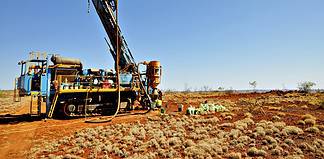The Kestrel mine in central QLD. Image: Rio Tinto.
BY ELIZABETH FABRI
RIO Tinto has completed its exit from the coal industry after agreeing to sell its remaining QLD coal assets for $US4.15 billion.
The mining giant has been on a selling spree in recent years, letting go of assets such as its $US2.7 billion Hunter Valley Operations (HVO) to focus on growth in iron ore and copper.
In March, Glencore was named the winning bidder for Rio’s 82 per cent interest in Hail Creek open cut mine and its 71.2 per cent interest in the undeveloped Valeria project, paying $US1.7 billion for the assets.
Days later, Rio entered a binding agreement to sell its 75 per cent interest in Winchester South undeveloped coal project to Whitehaven for $US200 million.
The next project on the chopping block was Rio’s 80 per cent interest in Kestrel, which was sold to a consortium comprising private equity manager EMR Capital and Indonesian listed coal company PT Adaro Energy Tbk for $US2.25 billion.
Rio Tinto chief executive J-S Jacques said the sale of the coal assets was in line with its strategy of strengthening its portfolio, and allocating capital to the highest value opportunities.
“The sale of Kestrel, together with the announced divestments of Hail Creek and our undeveloped coal projects, delivers exceptional value to our shareholders and will leave our portfolio stronger,” Mr Jacques said.
In a statement, Glencore – which purchased a 49 per cent interest in HVO following Yancoal’s acquisition of Rio’s Coal & Allied business in June 2017— said its Australian coal division produced more than 87 million tonnes of saleable coal in 2017 from 17 operational mines in QLD and NSW.
Hail Creek will add a further 9.4 million tonnes of coal to Glencore’s annual production.
Australian resources private equity firm and new Kestrel owner EMR Capital has also been making moves in the industry with nine operations worldwide, including the Golden Grove base and precious metals mine in WA.
The three sales were expected to finalise in the second half of 2018, subject to regulatory approvals.








































